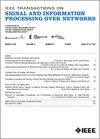CBDS2R: A Cluster-Based Depth Source Selection Routing for Underwater Wireless Sensor Network
IF 3
3区 计算机科学
Q2 ENGINEERING, ELECTRICAL & ELECTRONIC
IEEE Transactions on Signal and Information Processing over Networks
Pub Date : 2023-07-28
DOI:10.1109/TSIPN.2023.3299108
引用次数: 0
Abstract
Underwater wireless sensor network (UWSN) is one of the kinds of wireless sensor network (WSN). This type of network is suitable for underwater areas such as pools, rivers, seas, and oceans. In UWSN, the energy of nodes is more depletes compared to WSN. As more energy in nodes depletes for transmitting data, therefore routing is the most important issue for UWSN. Sensor nodes in water use acoustic waves to transmit data packets contrary to sensor nodes in WSN which are used radio waves for this purpose, hence the link quality of the acoustic and radio waves is different. Therefore, it is impossible to use routing methods and protocols based on WSN for UWSN. This article focuses on routing in UWSN and proposes a depth source selection phase via link quality between sensor nodes with mobile sink(s) for improving energy-saving and network lifetime. The new proposed algorithm contains six phases are as follows: network architecture, calculating link quality, clustering, source selection, mobile sink mechanism, and transmitting data packets phase. Also, the new approach is suitable for small and large networks. Results of experimental simulation clearly show that this new proposed algorithm improves residual energy and network lifetime by at least 40.28% and 58.88% respectively.CBDS2R:一种基于集群的水下无线传感器网络深度源选择路由
水下无线传感器网络(UWSN)是无线传感器网络的一种。这种类型的网络适用于水下区域,如水池、河流、海洋和海洋。在UWSN中,与WSN相比,节点的能量消耗更多。由于节点中更多的能量用于传输数据,因此路由是UWSN最重要的问题。水中的传感器节点使用声波来传输数据包,而WSN中的传感器节点则使用无线电波,因此声波和无线电波的链路质量不同。因此,UWSN不可能使用基于WSN的路由方法和协议。本文重点研究了UWSN中的路由,并提出了一个通过传感器节点与移动汇聚点之间的链路质量进行深度源选择的阶段,以提高节能和网络寿命。新提出的算法包括六个阶段:网络架构、计算链路质量、聚类、信源选择、移动信宿机制和数据包传输阶段。此外,新方法适用于小型和大型网络。实验仿真结果表明,该算法的剩余能量和网络寿命分别提高了40.28%和58.88%。
本文章由计算机程序翻译,如有差异,请以英文原文为准。
求助全文
约1分钟内获得全文
求助全文
来源期刊

IEEE Transactions on Signal and Information Processing over Networks
Computer Science-Computer Networks and Communications
CiteScore
5.80
自引率
12.50%
发文量
56
期刊介绍:
The IEEE Transactions on Signal and Information Processing over Networks publishes high-quality papers that extend the classical notions of processing of signals defined over vector spaces (e.g. time and space) to processing of signals and information (data) defined over networks, potentially dynamically varying. In signal processing over networks, the topology of the network may define structural relationships in the data, or may constrain processing of the data. Topics include distributed algorithms for filtering, detection, estimation, adaptation and learning, model selection, data fusion, and diffusion or evolution of information over such networks, and applications of distributed signal processing.
 求助内容:
求助内容: 应助结果提醒方式:
应助结果提醒方式:


